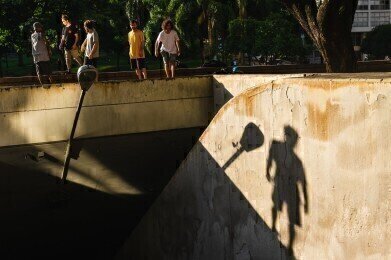News & Views
How to Become Invisible in Real Life
Oct 01 2014
If you could choose one superpower, what would it be and why? Few questions evoke such a childlike sense of wonder, bringing even the most serious of adults under the spell of their own imagination. From flying to mindreading, it’s certainly a difficult choice. But for many people the decision is simple - invisibility is the hands-down winner.
Invisibility is a magical concept that has dominated science fiction for decades - more recently this has been seen in Harry Potter, The Incredibles and Fantastic Four. But thanks to the work of scientists, it is more than just fantasy. The concept is fast becoming a reality, via a method known as ‘cloaking’.
The science of invisibility ‘cloaks’
Unlike popular fiction, a ‘cloak’ in this instance is not a garment of clothing. In reality, an invisibility device is far less romantic - but still incredibly impressive. While many researchers have managed to achieve at least some level of cloaking, perhaps the biggest breakthrough came in September 2014 at the University of Rochester, New York.
Previously Labmate covered developments about new microscopy technique that could potentially lead to invisibility cloaks and even invisible metal, but this is one step further (or perhaps several).
The Rochester Cloak uses a 3D, multi directional, four lens system. This means that when looking through the lens, there is no distortion of the background. To check, researchers used a gridded backdrop to check for inconsistencies. The object also appears invisible from many angles - a major improvement on previous attempts.
Up until now, cloaking efforts have been largely imperfect. Many devices only work for very specific frequencies of light and from one singular location. Move slightly to one side or the other and the object becomes visible again.
This latest cloaking method from the team at Rochester uses lenses to distort light. This light is bent around an object, so you can see what is behind it - making it invisible. The Rochester Cloak can make an object disappear entirely or just in part. Seeing - or, in this case, not seeing - is believing. This video demonstrates the cloak in action, which is the best way to appreciate the experiment.
While the patent is still pending for the Rochester Cloak, the team has in fact publicised instructions to recreate the experiment at home for less than $100, using store-bought lenses. It can be scaled up or down for any size of lens.
Invisibility and its uses in the real world
Invisibility is not all about bringing science fiction to life. This type of cloaking may eventually have real-world applications, such as increasing visibility for lorry drivers or allowing surgeons to work with zero obstructions - literally seeing through their own hands.
The possibilities posed by invisibility are certainly tantalising and exciting, that the science world will surely be following the next developments with great interest.
Digital Edition
Lab Asia 31.2 April 2024
April 2024
In This Edition Chromatography Articles - Approaches to troubleshooting an SPE method for the analysis of oligonucleotides (pt i) - High-precision liquid flow processes demand full fluidic c...
View all digital editions
Events
Apr 28 2024 Montreal, Quebec, Canada
May 05 2024 Seville, Spain
InformEx Zone at CPhl North America
May 07 2024 Pennsylvania, PA, USA
May 14 2024 Oklahoma City, OK, USA
May 15 2024 Birmingham, UK


















